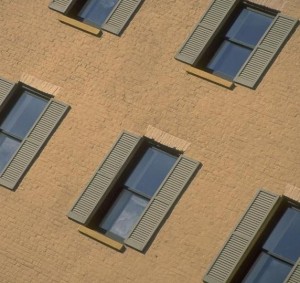Formaldehyde in Schools Linked to Childhood Allergies and Asthma
Research from France’s INSERM (National Institute of Health and Medical Research) has determined that classrooms with high levels of formaldehyde and other aldehydes significantly increase the incidence of asthma and allergies in children.
Many schools throughout the world were built many decades ago. This means many were built when aldehydes like formaldehyde were frequently used fire retardants and preservatives. Thus we find that aldehydes were used in ceiling tiles, fiber board and drywall. Turns out that
In this article
Aldehydes studied in 108 schools
The research was conducted in 108 primary schools among six French cities. The schools were attended by a total of 6,590 children with an average age of 10 years old.
The researchers then randomly selected 401 classrooms from the 108 schools. They measured the air quality among the schools, and found that 30% of the classrooms were such that children were “highly exposed” to pollutants, which included three aldehydes (including formaldehyde), nitrogen dioxide, and others.
The researchers then analyzed the incidence of asthma and allergies among the classrooms, and found that those containing high levels of formaldehyde increased the incidence of rhinoconjunctivitis (allergies of the sinus and eyes) by 20%.
They also found that classes with higher levels of acrolein – another aldehyde – increased the incidence of asthma by 22%.
Formaldehyde and other aldehydes prevalent
Formaldehyde is used to make a variety of building materials, including carpeting, foam, vinyl flooring, ceiling materials, insulation, and others. It is also used as an adhesive and fungicide for plywood, and a resin used to make plastic and vinyl coatings.
Acrolein is a component of materials made from polyester resins. It is also present in polyurethane – used in plastics and wood varnish. In addition, acrolein is released from acrylic acid – used to make vinyl, styrene and other monomers in addition to adhesives and plastic resins.
Many schools, homes and office buildings built over the past half-century contain significant aldehyde content. Consumer items such as furniture and even bedding can also contain and release measurable amounts of one or more aldehydes.
The researchers concluded that the prevalence of these types of air pollutants “was related to an increased prevalence of clinical manifestations of asthma and rhinitis in schoolchildren.”
Formaldehydes are found in lots of laminate flooring too.
REFERENCE:
Annesi-Maesano I, Hulin M, Lavaud F, Raherison C, Kopferschmitt C, de Blay F, André Charpin D, Denis C. Poor air quality in classrooms related to asthma and rhinitis in primary schoolchildren of the French 6 Cities Study. Thorax. 2012 Mar 21.
















